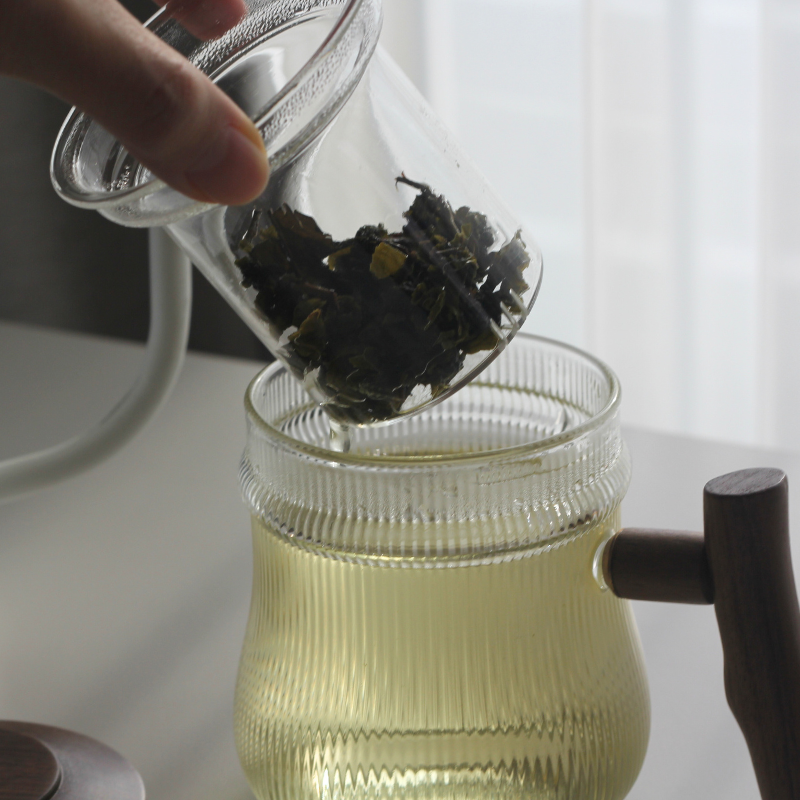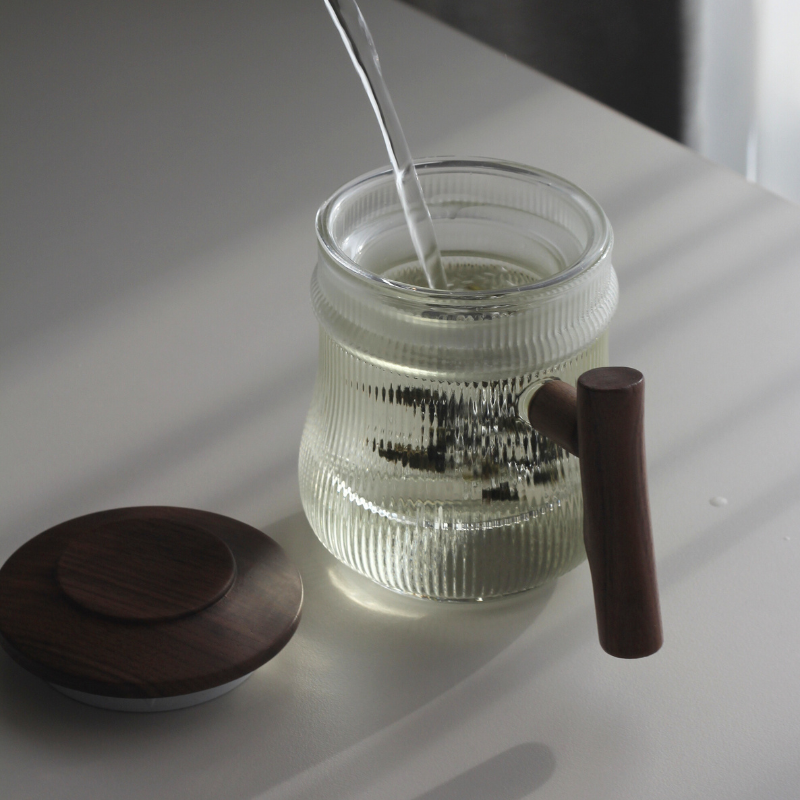TEA JOURNEY [1] | History of Tea in Korea

Origin
There are two origin stories regarding tea in Korea.
1. India
In the "History of Korean Buddhism" (1918) written by the Buddhist scholar Yi Neunghwa (1869-1943), there is a record of Queen, the consort of King Suro of the Garak Kingdom (also known as Geumgwan Gaya), bringing tea seeds from China and planting tea trees in Baekwolsan Mountain (located near present-day Changwon, Gyeongsangnam-do).
2. Tang China
The first recorded instance of tea being introduced to Silla (also known as Shilla) was during the reign of Queen Seondeok (632-640 CE). However, the official introduction of tea seeds through formal diplomatic channels is said to have occurred in the third year of King Heungdeok's reign (828 CE), as documented in the "Samguk Sagi" Three Kingdoms historical records.In the winter of the third year of King Heungdeok's reign, an envoy was sent to Tang China, and they were warmly received at Lindezhen Hall, where the court determined their ranks and held a feast. When the envoy returned from Tang, they brought tea seeds, which were then planted by the king in the Jirisan Mountain area.
Based on these records, it is widely believed that the practice of drinking tea began during the reign of Queen Seondeok. However, the period when tea seeds were brought in and cultivated is commonly associated with the reign of King Heungdeok.
Tea Culture of the Three Kingdoms Period
In Goguryeo, it is speculated that the dissemination of tea culture began when King Bogeum sent envoys, including monks, to bring Buddhist statues and scriptures from China in the second year of King Sosurim's reign (372 CE). The presence of the name "Guda-guk" (meaning "tea country") in historical records such as the "Samguk Sagi" confirms the prevalence of tea culture in Goguryeo. Additionally, the Japanese historian and tea scholar Masaru Aoki (1887-1964) recorded in his book of Chinese literary research "Aoki Masaru Zenshu" that an original form of tea, resembling a thin and flat cake, was discovered in excavated burial mounds in Goguryeo. These tea cakes had a diameter of about 4cm.
In Baekje, after Buddhism was introduced by Marananta in the late 4th century, royal authority and a centralized system strengthened, leading to the flourishing of Buddhist culture. As a result, the custom of drinking tea (called "umda" in Korean) became popular among the royalty, monks, and the nobility. The Important Records on the Dongdae Temple, a historical record from Japan, mentions that the monk Venerable Haenggi (668-748 CE) planted tea trees in Dongdae Temple.
Evidence from recent excavations in the Baekje relics of Pungnap Fortress reveals the discovery of Chinese Geyuho (a vessel with a rooster-like spout) and Dawan (a tea bowl), suggesting that tea culture in Baekje may have originated in the 3rd century, during the period of the Western Jin Dynasty (256-316).
In Silla, there are numerous records of Hwarang warriors enjoying tea to cultivate their minds and bodies. Hwarang members would drink tea wherever they went, encourage each other, and build virtue. It is said that they practiced sincere conduct and modesty while drinking tea, a practice known as "jeonghaeng geomdeok."
The introduction of Buddhist rituals involving tea as a sacred beverage, known as "Heondaeui" or offering tea to the Buddha, further popularized tea culture among the aristocracy. Tea ceremonies became an integral part of state events such as the Yeondengje festival, and tea culture also permeated the monastic life of the clergy. After the unification of the Three Kingdoms, tea culture continued to flourish in Silla.
Tea Culture of Goryeo Period
The Goryeo Dynasty is considered the golden era of tea culture in Korea. Tea culture became firmly established in various ceremonies and rituals. According to the records of the Yebu section in the History of Goryeo records, tea ceremonies, such as lantern festivals and eight-section ceremonies, were held during important national events, welcoming envoys, the birth of royal descendants, the investiture of crown princes, royal weddings, and royal ancestral rites.
As the demand for tea increased in the royal court, the tea ceremonies were overseen by the Taegam, an office responsible for tea-related affairs. Monks and scholars also enjoyed the cultural practices of Mingjian, a style of tea contest similar to the Song Dynasty's Tucha.
In the early Goryeo period, tea culture was mainly centered around temples and the nobility. However, after the Mushin Incident in the 24th year of Uijong's reign (1170), tea culture thrived among scholars and intellectuals. During the peak of tea culture in Goryeo, a form of poetry called "dasi" (tea-related poems) also developed, capturing the essence of tea culture.
As tea ceremonies became an integral part of the ruling class's culture, many poets, especially scholars, composed numerous dasi poems. The renowned poet Yi Gyu (1168-1241) pursued the ideal of harmonizing multiple perspectives and left behind excellent dasi poems. One notable example is "Yudasi," a poem he composed as a token of gratitude after receiving Joacha (a kind of tea) from the renowned monk Seol Bongsan.
Tea Culture of Joseon Period
Due to the enforcement of policies that tributes to Confucianism and rejects Buddhism, Joseon restricted luxurious lifestyles, and the spread of Buddhism. Tea culture also declined.
However, royal ceremonies and the tea customs of the literati continued. Although it declined compared to the Goryeo period, tea culture continued among monks in remote Buddhist temples.
In the 15th century, the First Japanese Invasion of Joseon and the Second Manchu Invasion of Joseon, devastated the entire country, leading to a rapid decline in tea culture in Joseon. The royal court and temples maintained a faint lineage. It wasn't until the 19th century that tea culture experienced a revival. During the late Joseon period, key figures in the revival of tea culture including Hyechang of Daeheungsa Temple, Choeui, and Beomhae among the monks, and scholars like Jeong Yak-yong and Kim Jeong-hee, drove the renaissance.
Jeong Yak-yong (1762-1836), also known as Dasan, was a late-Joseon scholar and philosopher. While he was exiled in Gangjin, he had interactions with monk Hyechang (1772-1811) and exchanged knowledge about tea. Jeong Yak-yong developed his own tea ceremony principles and adopted the pseudonym Dasan, meaning "tea mountain." He organized the Dasin Society and contributed to the revival of tea culture.
Kim Jeong-hee (1786-1859), known as Chusa, was a late-Joseon literati, renowned calligrapher, and scholar. Chusa maintained a friendship with the monk Choeui for over 40 years. When Chusa was exiled to Jeju Island, Choeui sent him tea as a gift every year, and they spent six months together on Jeju Island. One famous example symbolizing their friendship is the calligraphy work titled "Myeongseon" that Chusa had written in return for showing gratitude for Choeui's tea.
Choeui (1786-1866), a monk, is a representative figure who led the revival of tea culture in the late-Joseon period. Choeui authored "Dongsa Song," which can rival "Dagyeong" written by the Tang Dynasty's Liu Yu, making it the first tea-related book in Korea. "Dongsa Song" covered everything from the ecology and cultivation methods of tea trees to tea ceremony principles, making significant contributions to promoting and developing Korean tea.
At the age of 24, Choeui met Jeong Yak-yong, who was in exile in Gangjin, and they shared poems and paintings based on tea. Choeui is referred to as the "Daseong" (tea sage) of Korea and authored "Dongdasong" and "Dasinjeon," cementing his position as a tea master in Korea.






![TEA JOURNEY [13] | Tea Tasting Terminology](http://tingeofsoul.com/cdn/shop/articles/IMG_3072.jpg?v=1686898175&width=1080)
Leave a comment